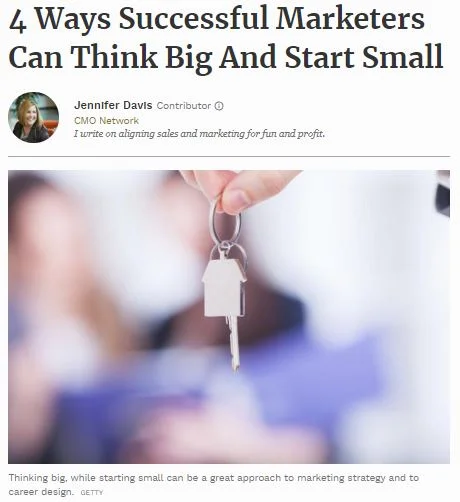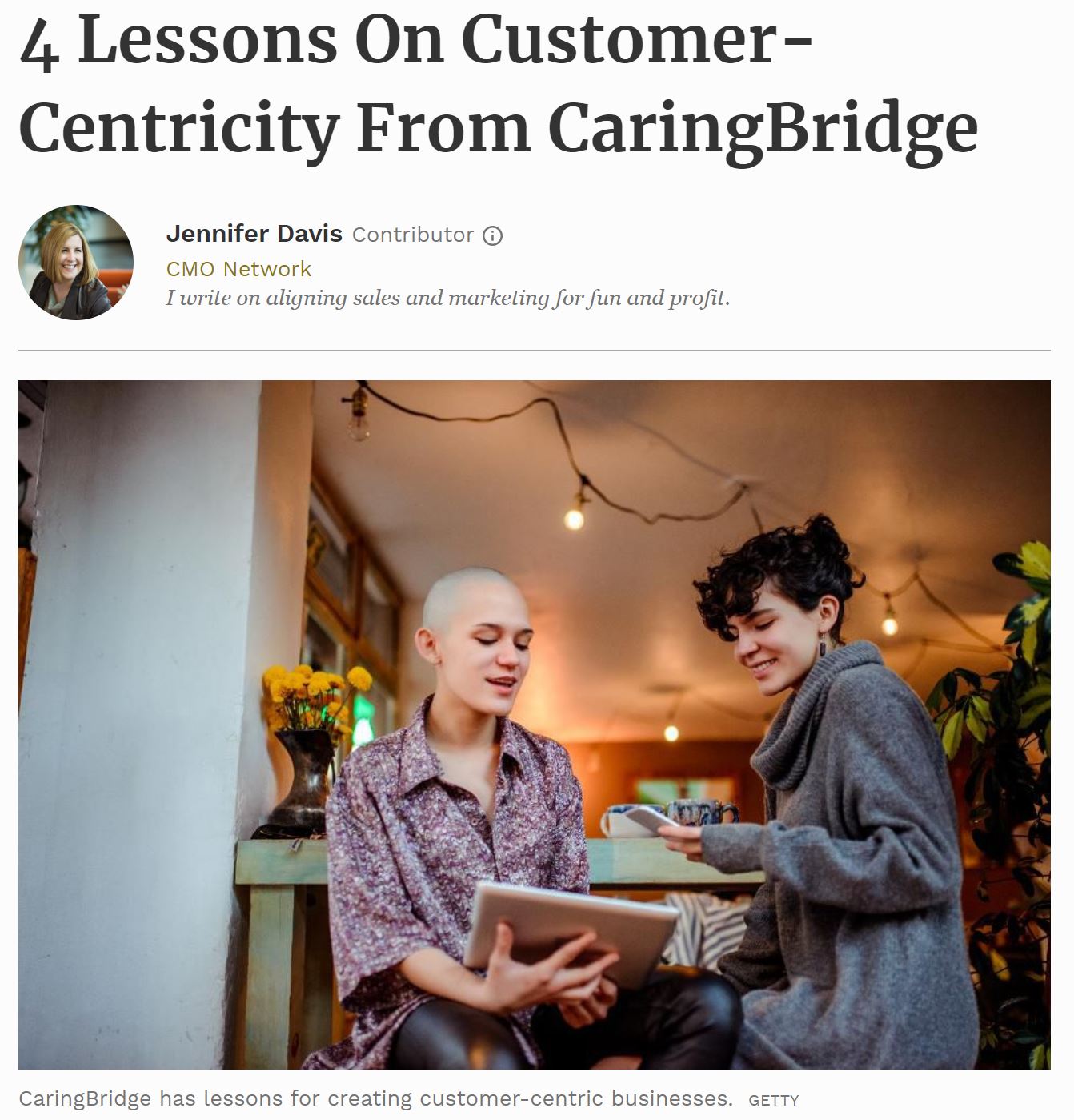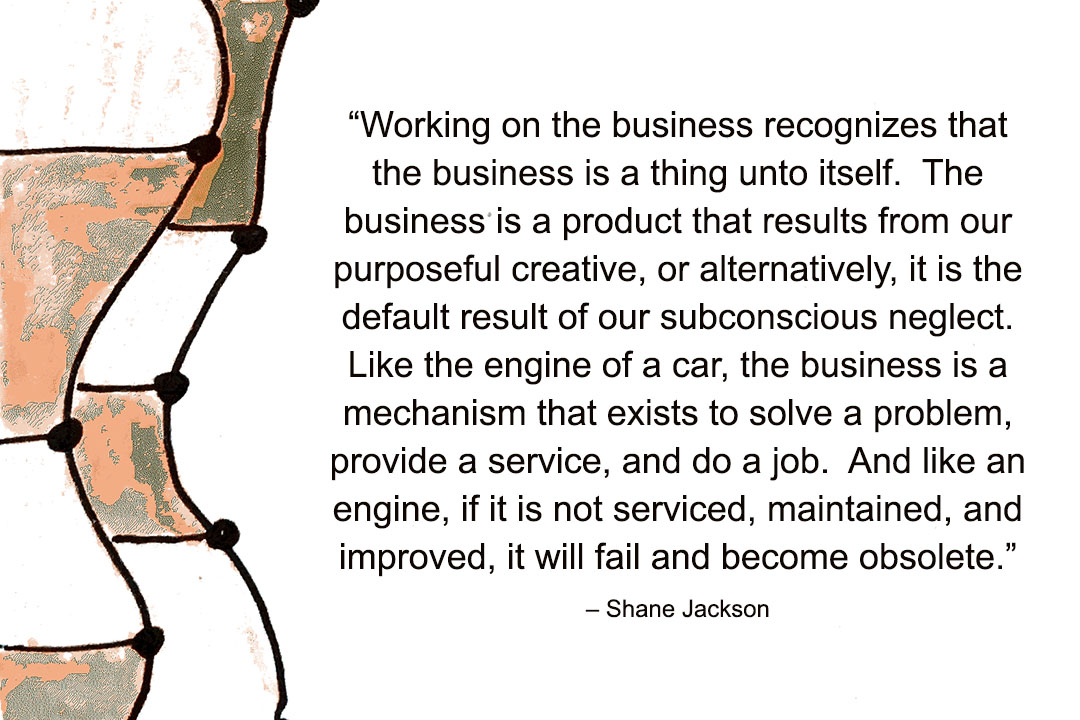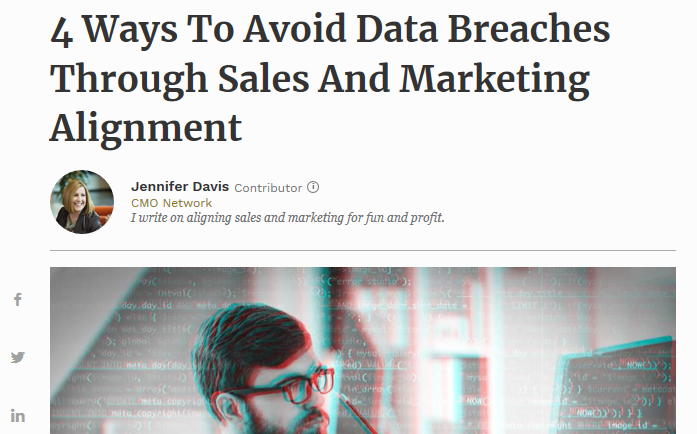Melissa Craig-Fink is the marketing and operations manager for Panther Residential Management who manages traditional and non-tradition multi-dwelling residences in several eastern US states. Throughout her career in marketing - working for brands like Quizno’s, Sports Clips, and the Ritz Carlton, and now as a department of one in real estate - she knows the challenges of balancing strategic and tactical priorities on long-term and short-term horizons. Here are some lessons she has learned that will help any marketer and business leader be successful.
Take Risks
“When I worked at Quizno’s in franchise marketing, digital advertising was a new concept and the marketing team was nervous to jump into that space,” Fink recalls. “It is funny to say now because I am a raging fan, but at the time we were not all convinced, and the marketing team was reluctant to manage the project.” This was over six years ago when many were still experimenting. “Although I was not very hopeful that digital would drive customers to our doors the way our traditional outreach had, I agreed to do it.” The rest is history, she said. The program was a success and she was forever changed as a marketer. “My mindset now is that everything is moving towards digital. Now, my role is primarily online reputation management and digital advertising. Roles that I wouldn’t have believed would exist just a few years ago.”
Be Prepared to Change
“Your market changes every quarter,” Fink explained. “You need to look regularly at your customer base, talk to your on-site teams and get fresh eyes on the changing demographics, and then shift your strategies.” This is true of any business, but especially in highly dynamic markets like residential real estate. For instance, Fink has had success targeting around universities for changing student populations.
Being responsive is critical to Panther’s business and to Fink’s role as a marketer, as future tenants are likely to be referred by today’s tenants. “People shop for apartments online, but not just on our website or properties, but in their friends’ social feeds, review sites, and places where we can only loosely influence what is said and shown about our properties,” she explained. “We try to be very responsive, answering positive or negative reviews within 2 hours and inviting those with complaints to speak to us directly.” This level of responsiveness requires an openness to change. “Our leasing agents have been nervous about invited angry customers to speak to them personally in the past, but that is how issues are resolved and negative reviewers turn into positive fans.”
Managing through emotional reactions is the key to finding actionable insights. “If you are defensive, ask yourself why,” she suggested. “If you can take the emotion out of it, you can remain empathetic to the complaint and find an opportunity to fix problems.” Alternatively, “you can defend yourself and make the assumption that the thing that people have complained about is not an issue, but if you see the anecdotes piling up, chances are you have a problem.”
The Answer Might Be Simple
Prior to her joining the company through acquisition, Panther lacked a marketing team. “A lot of things were blamed on the lack of marketing,” she recalled. “If we had just assumed that, we would have made some mistakes. For instance, in one of our properties, they noticed that lease booking and property tours were down and the cause was not obvious but was being attributed to lack of awareness. “Instead of just blaming brand awareness and jumping into a promotional campaign, I visited the properties and shopped the comparable properties close by and in the price range,” she recounted. “Sometimes the problems were so obvious it was comical. I would suggest that we needed to update the colors in the model, provide customer service training to the leasing office, or make simple changes and those began to make a big difference.” Simple changes that made all the difference.
These observations can happen physically on the property or in an analysis of the data. “In the franchise world, everything had tracking codes and I could create reports to show what was working with the IT department,” she said. “In apartments, I had to create the reports, work with vendors to create them, or uncover the data that existed in our current systems that no one had been utilizing.”
“Model homes are key sales tools for apartment leasing and sometimes there isn’t budget for a major refresh of an apartment, but even in those cases there is a lot we can do.” One model in Memphis hadn’t been updated in a while and had a large number of faux plants. “It looks cluttered and dated and it didn’t reflect the brand well,” Fink recalls. “We removed those plants, decluttered other decorations from the space, changed out the bedding and shower curtain and it looked modern and fresh.” Not all changes have to be expensive or extensive. “It can be as simple as swapping out the welcome rug,” she joked. “Ultimately there are judgment calls, but over time your judgment can inform you how prospective customers would be comparing their property to others in their price range and in the area.” This is true of other businesses and industries as well. The change you need might be a simple fix that no one had done before.
Think Big and Start Small
“Sometimes having a shoestring budget can cause you to think small, but if you get creative you can accomplish more,” she offered. “At Quizno’s, we were able to do an unbudgeted sponsorship of the Nashville Sounds baseball stadium. We chose to do this because we had multiple locations within a 5-mile radius of the stadium and were testing a geotargeting digital platform that would drive traffic.” There were short-term and long-term benefits to the campaign. “Once we decided it was worth recommending, we got owner buy-in and found creative ways to fund it. It worked so well, they rolled it out to other regions, even larger marks like Denver."
"If you continue to think big, you can often find ways to afford it. But if you limit your thinking, you will never know what could have been accomplished.”
“Always test small. In the businesses of retail franchising or apartment complexes, I always test in one or two locations or by segments,” she explained. The same held true in her time in franchise marketing. “If you start big doing a portfolio-wide roll-out, you don’t get the work the kinks out and fix things first.” With the growth of digital marketing, there is an assumption that data is more readily available than it might be, so finding things to test that can be measured is key. “Marketers are in the data analytics business,” Fink observed. “You must learn how to slice and dice your data into a format that is legible and actionable.”
“Innovation can happen at companies of all sizes and business models,” she said. “Larger companies might have more resources, but if there is a management buy-in, even small companies can do creative things.”
Fink had her concerns going from larger companies like Ritz Carton or Quizno’s to smaller companies like Panther Residential Management, but she has since concluded that “all businesses need an open mind and strategic thinking,” so she continues to find ways to think big and start small.
This article was originally posted on Forbes.com



































